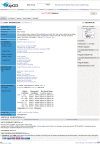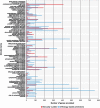The Aspergillus Genome Database, a curated comparative genomics resource for gene, protein and sequence information for the Aspergillus research community
- PMID: 19773420
- PMCID: PMC2808984
- DOI: 10.1093/nar/gkp751
The Aspergillus Genome Database, a curated comparative genomics resource for gene, protein and sequence information for the Aspergillus research community
Abstract
The Aspergillus Genome Database (AspGD) is an online genomics resource for researchers studying the genetics and molecular biology of the Aspergilli. AspGD combines high-quality manual curation of the experimental scientific literature examining the genetics and molecular biology of Aspergilli, cutting-edge comparative genomics approaches to iteratively refine and improve structural gene annotations across multiple Aspergillus species, and web-based research tools for accessing and exploring the data. All of these data are freely available at http://www.aspgd.org. We welcome feedback from users and the research community at aspergillus-curator@genome.stanford.edu.
Figures



References
-
- Galagan JE, Calvo SE, Cuomo C, Ma LJ, Wortman JR, Batzoglou S, Lee SI, Basturkmen M, Spevak CC, Clutterbuck J, et al. Sequencing of Aspergillus nidulans and comparative analysis with A. fumigatus and A. oryzae. Nature. 2005;438:1105–1115. - PubMed
-
- Machida M, Asai K, Sano M, Tanaka T, Kumagai T, Terai G, Kusumoto K, Arima T, Akita O, Kashiwagi Y, et al. Genome sequencing and analysis of Aspergillus oryzae. Nature. 2005;438:1157–1161. - PubMed
-
- Nierman WC, Pain A, Anderson MJ, Wortman JR, Kim HS, Arroyo J, Berriman M, Abe K, Archer DB, Bermejo C, et al. Genomic sequence of the pathogenic and allergenic filamentous fungus Aspergillus fumigatus. Nature. 2005;438:1151–1156. - PubMed

